Featured Comment:
“Tried these the other day, they were so delicious they got devoured within a few minutes, so I had to make it again and triple the recipe. Since then I can’t stop making your recipes! Thank you!”
– @niidzumakun8170 (from YouTube)
What is Devil’s Onigiri (Akuma no Onigiri)?
Onigiri is a popular lunch box dish that translates to “rice ball” in English. These rice balls are usually shaped as rounded triangles but can also be spherical or cylindrical.
Devil’s Onigiri is a unique type of rice ball sold exclusively at the Japanese convenience store, “Lawson.” The name is a direct translation of “Akuma no Onigiri” (悪魔のおにぎり) in Japanese.
It was introduced in 2018 and quickly became a hit, with 200,000 units sold in the first four weeks alone. This rice ball is known for its rich flavor and is said to be “devilishly delicious” and “devilishly addictive.”
It is also known for being high in calories. The “devil” label is commonly used in the names of various dishes that are considered a naughty treat.
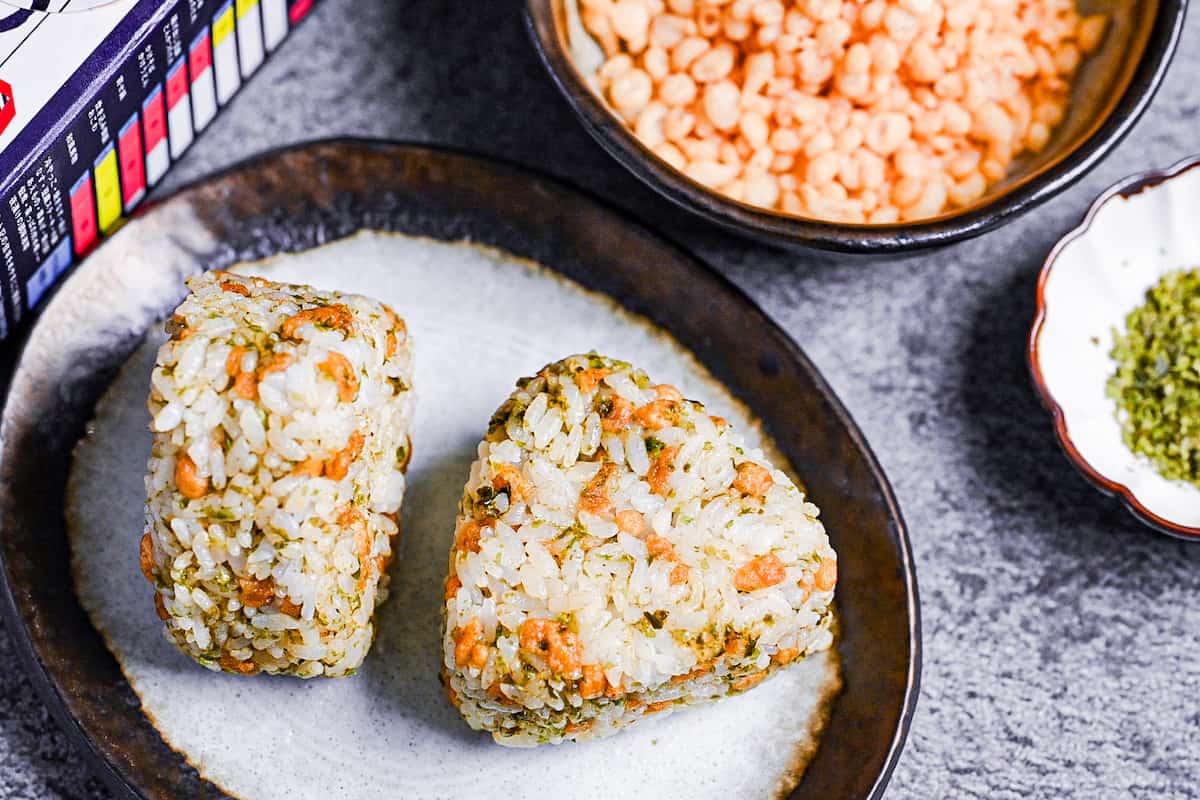

How I Developed This Recipe
I wanted to make this devil’s rice ball recipe as close as possible to the iconic taste of Lawson’s Akuma no Onigiri.
As a tribute to this much-loved konbini food, I made sure that every stage of the recipe development process was guided by a commitment to authenticity.
I bought the real thing from Lawson’s a bunch of times. This side-by-side comparison makes sure that this copycat recipe not only has the same flavors as the original but also makes it easier for people to make at home.
Why Is There Tanuki On The Package?
Have you noticed the unusual character on the front of the Devil’s Onigiri packaging? Akuma de Tanuki Kun is a Japanese “tanuki” raccoon dog with bat wings and devil’s horns.
You might think it’s random, but Japanese characters usually have some meaning behind them.
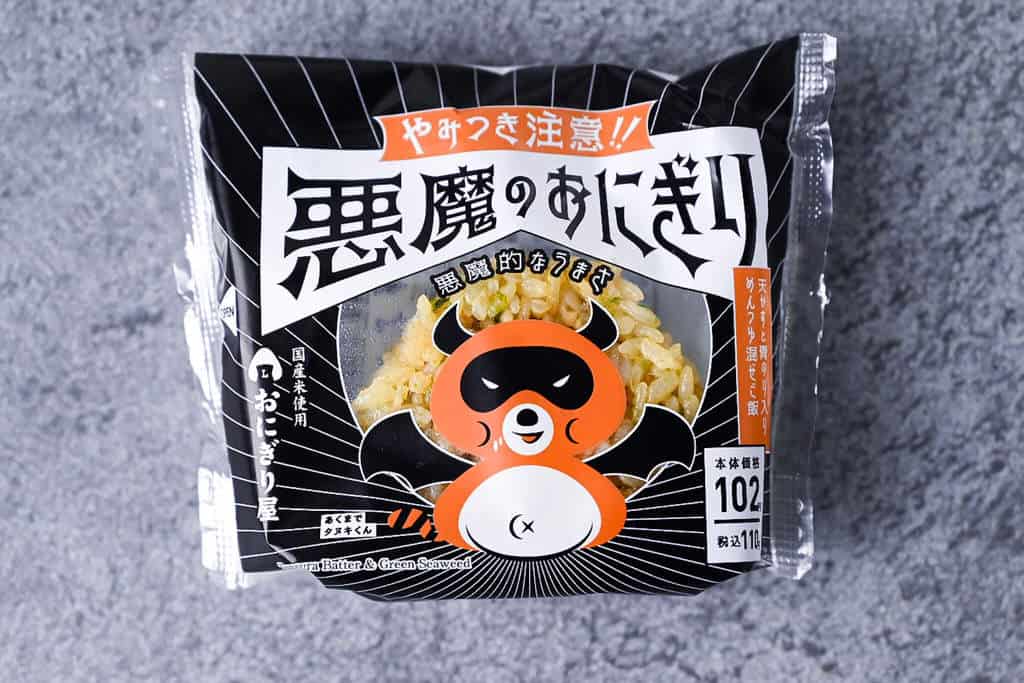
Did you know that there are two famous Japanese dishes with “tanuki” in their names? They are Tanuki Udon and Tanuki Soba. These are noodle dishes topped with tempura flakes.
Without a doubt, the main ingredient for Devil’s Onigiri is also tempura flakes, and that’s why a tanuki raccoon dog became the mascot for this onigiri!
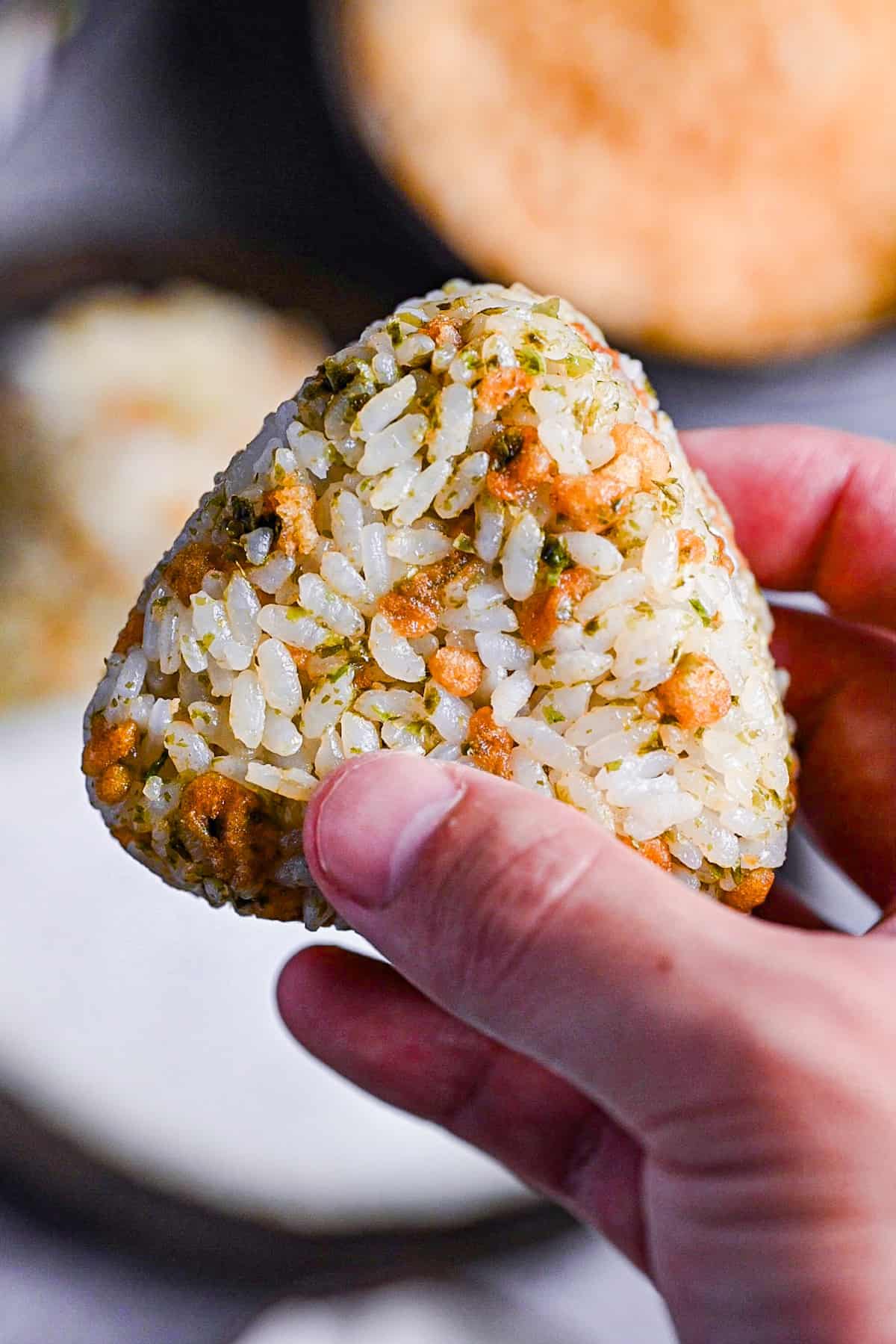
Visual Walkthrough & Tips
Here are my step-by-step instructions for how to make Devil’s Onigiri at home. For ingredient quantities and simplified instructions, scroll down for the Printable Recipe Card below.
If you prefer to watch the process in action, check out my YouTube video of this rice ball recipe for a complete visual walkthrough!
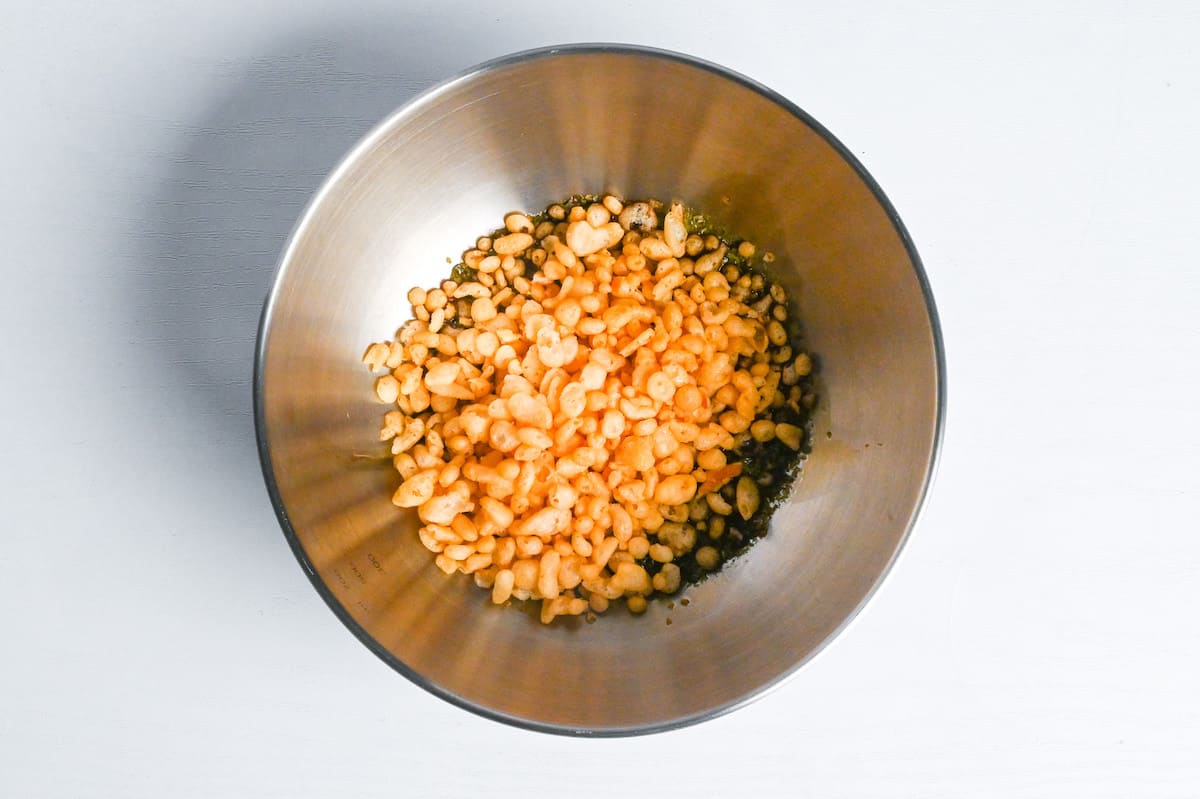
In a large mixing bowl, combine the tempura flakes, aonori powder, soy sauce, sugar, dashi granules, toasted sesame oil and chicken bouillon powder. Stir until all the liquid is absorbed.
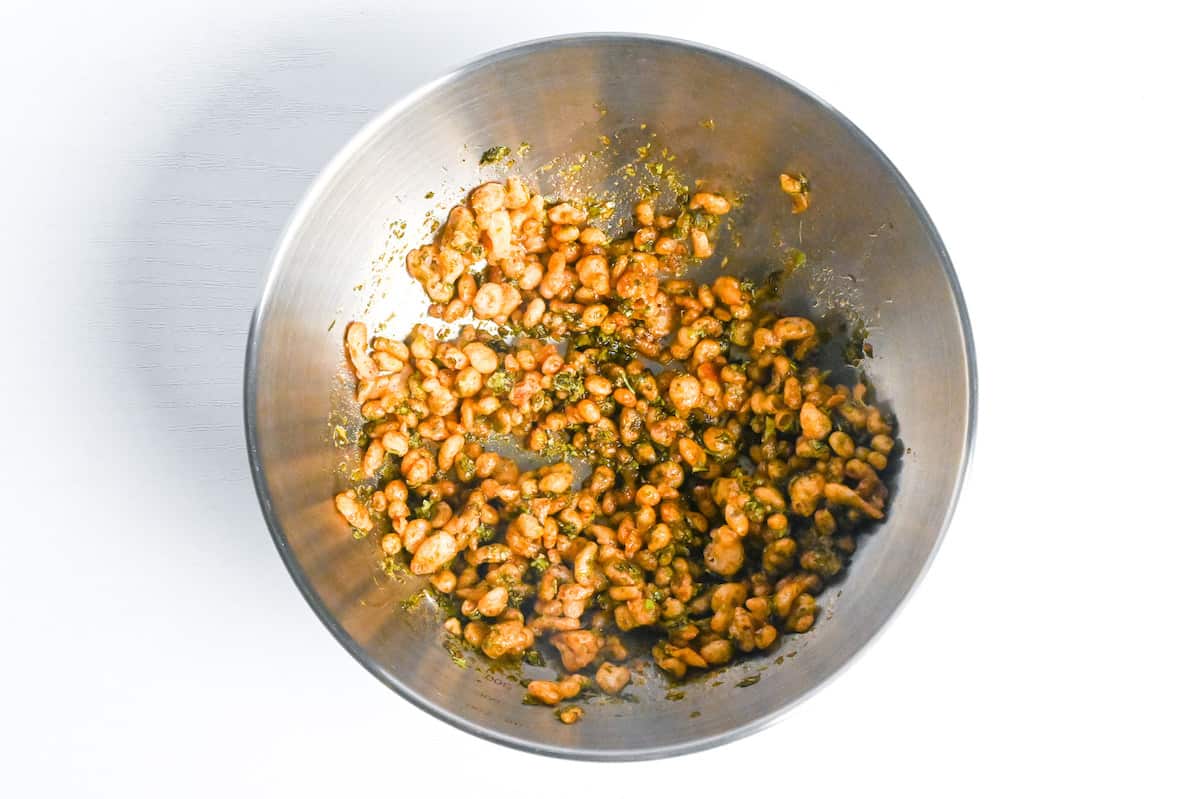
Don’t worry if tenkasu loses its crispiness, as it’s supposed to be a little soft by the end.
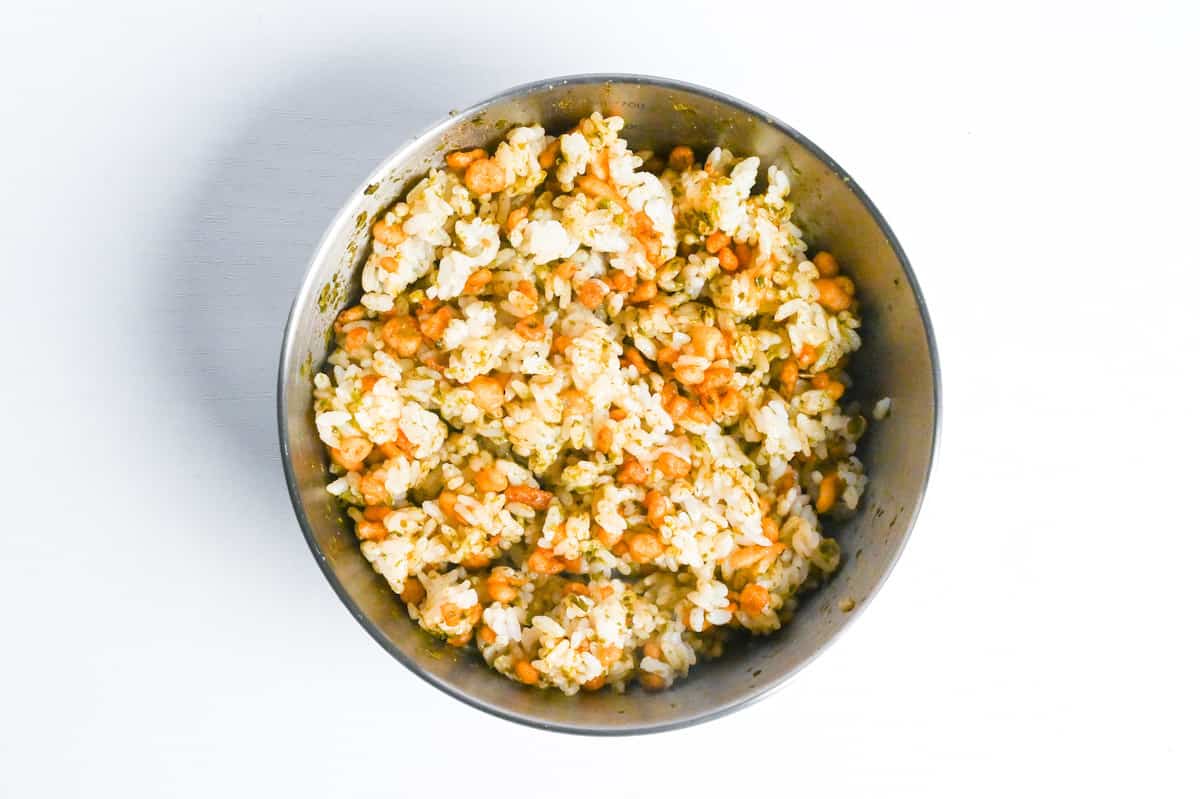
Introduce the cooked Japanese short-grain rice to the mixture. Mix thoroughly, ensuring the ingredients are evenly distributed throughout the rice.
Divide the seasoned rice into equal portions before shaping to ensure they are all the same size! My recipe makes 4 based on the size of my relatively small rice ball mold, so you can make them bigger or smaller depending on preference.
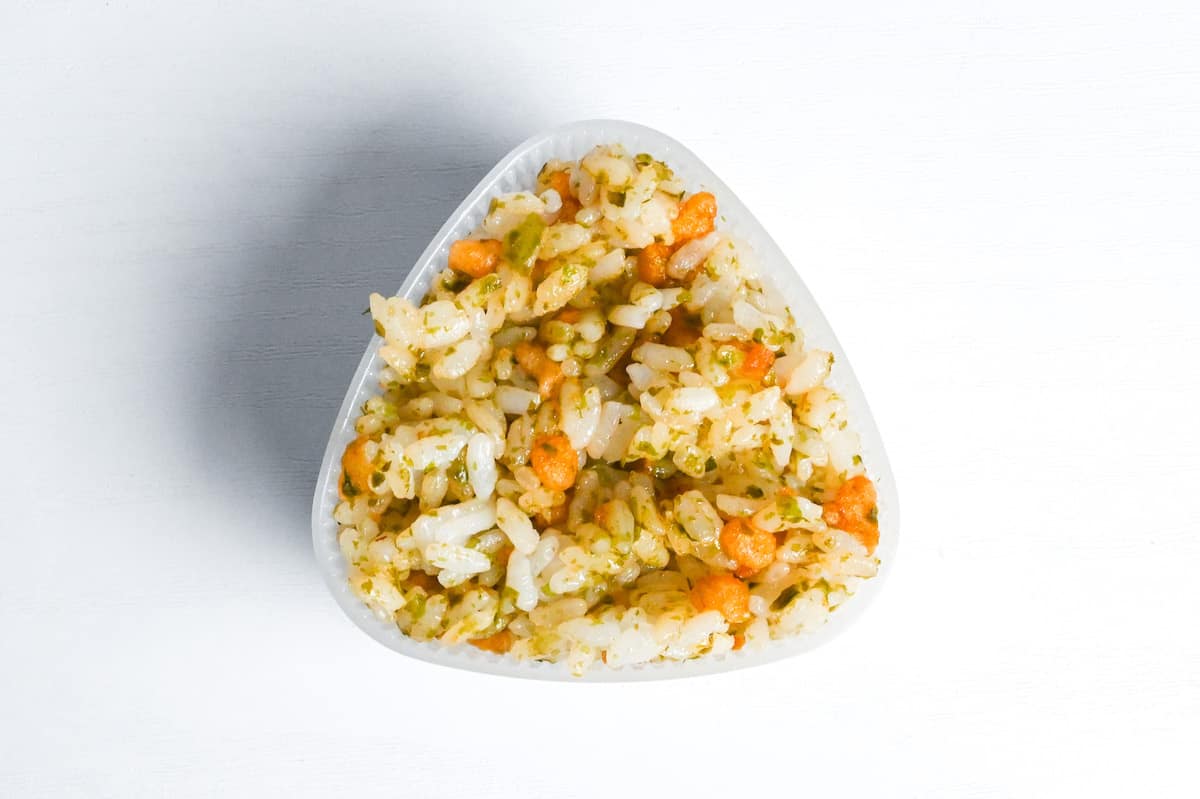
I really recommend using a rice ball mold for this, as the rice is oily and hard to shape by hand.
Shaping an onigiri rice ball can be done using several methods. You can use cold and wet hands, wrap them in plastic, or use a mold. Whatever your chosen method, pressing the rice down firmly is essential for it to maintain its shape.
In conclusion, shaping an onigiri requires practice. In my post titled “3 ways to shape the perfect onigiri rice ball“, you can learn more about each method for shaping an onigiri.
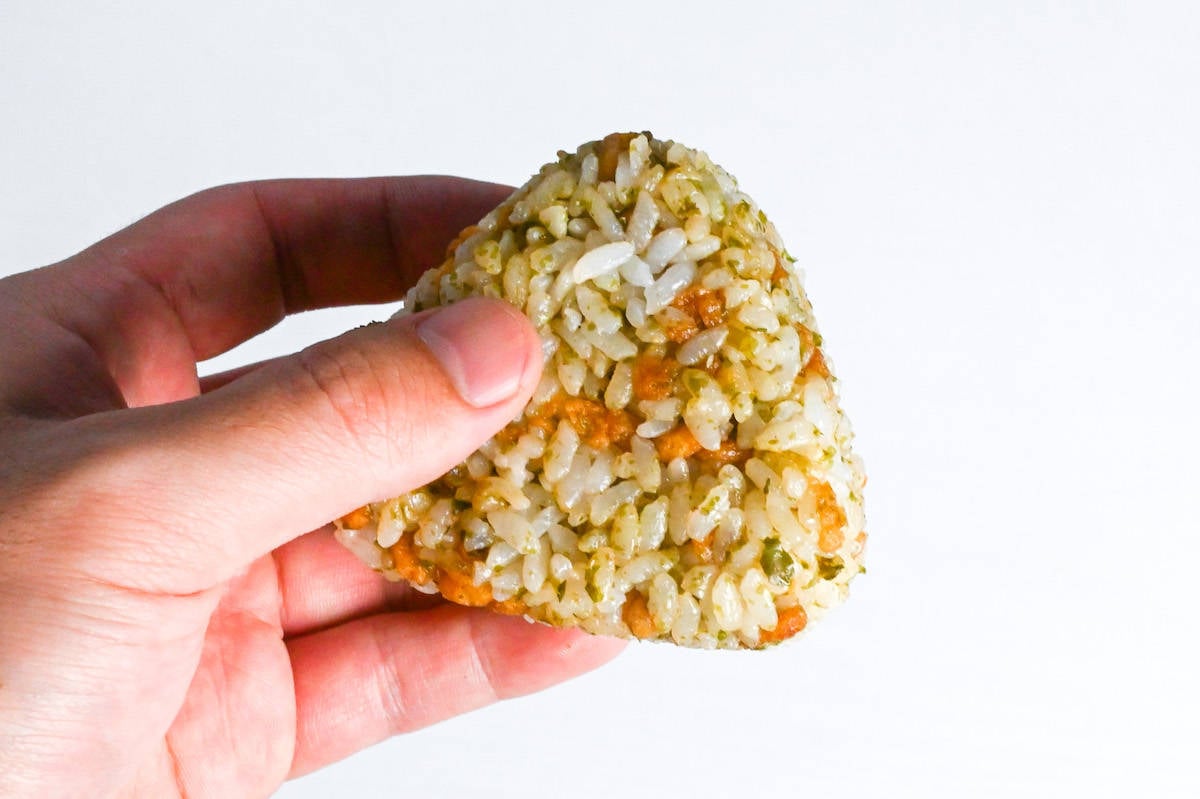
Enjoy as a snack or on-the-go breakfast! Alternatively, store using the instructions below.
Jump to Full Recipe Measurements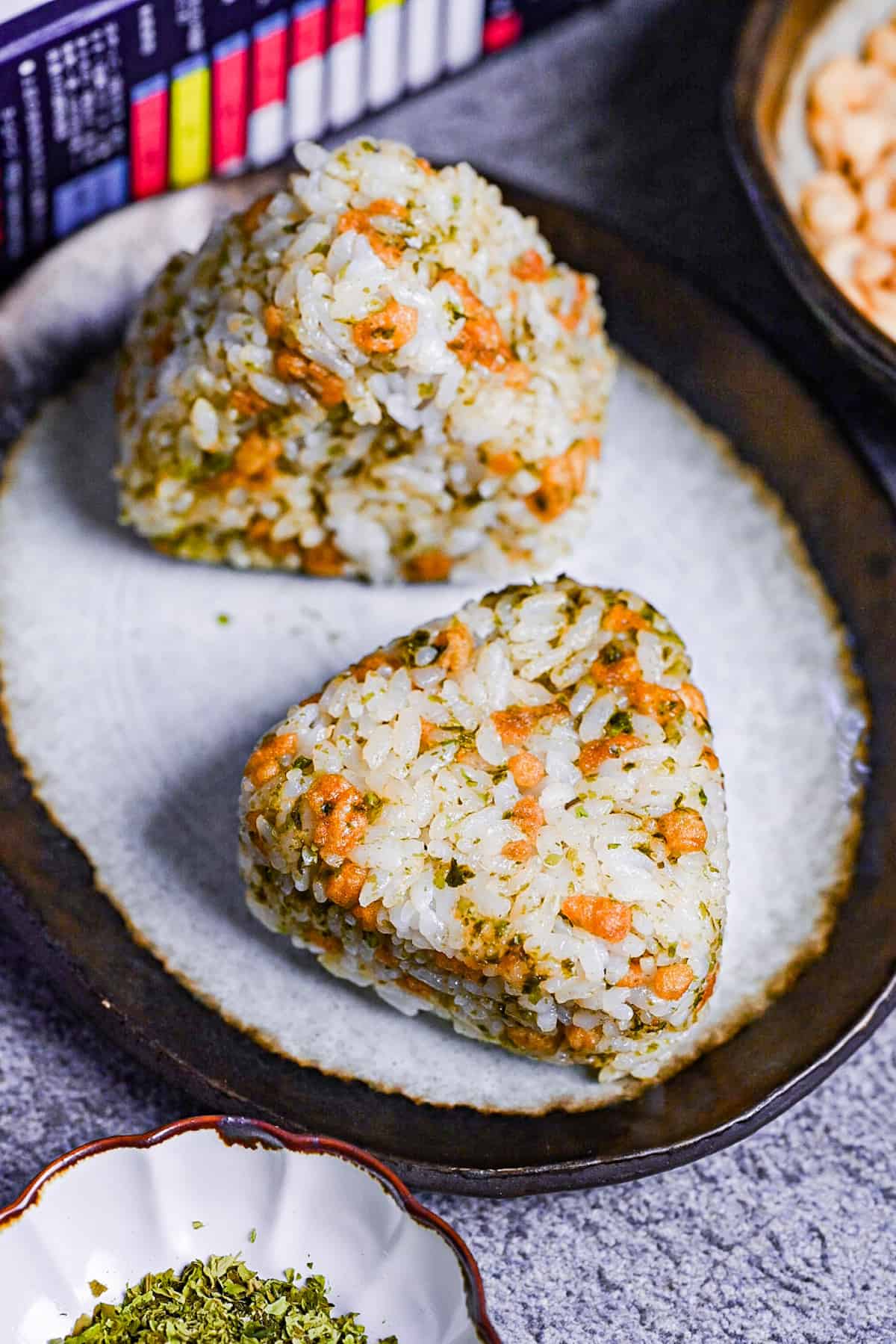
I hope you enjoy this Devil’s Onigiri copycat recipe! If you try it out, I’d really appreciate it if you could spare a moment to let me know what you thought by giving a review and star rating in the comments below. It’s also helpful to share any adjustments you made to the recipe with our other readers. Thank you!
More Copycat Recipes
- Milano Doria (Saizeriya)
- Black Vinegar Chicken (Ootoya)
- Tsukimi Burger (McDonald’s Japan)
- Yakiniku Rice Burger (Mos Burger)
Hungry for more? Explore my copycat recipe collection to find your next favorite dishes!
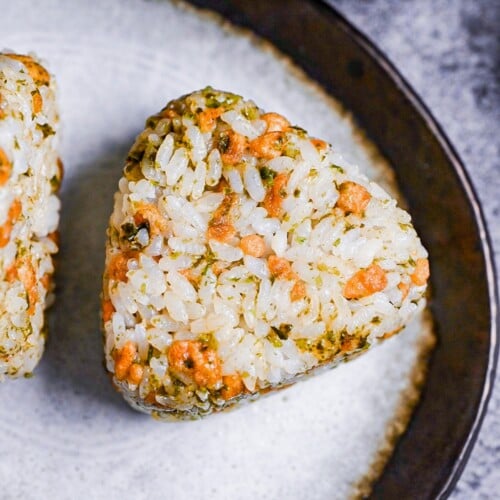
Devil’s Onigiri Copycat Recipe (Lawson Akuma no Onigiri)
Ingredients
- 300 g cooked Japanese short-grain rice
- 5 tbsp tempura flakes (tenkasu)
- 1 tbsp aonori (dried green seaweed powder)
- 1 tbsp Japanese soy sauce (koikuchi shoyu)
- ½ tsp sugar
- ¼ tsp dashi granules
- ¼ tsp toasted sesame oil
- ¼ tsp Chinese-style chicken bouillon powder
My recommended brands of ingredients and seasonings can be found in my Japanese pantry guide.
Can’t find certain Japanese ingredients? See my substitution guide here.
Instructions
- Add 5 tbsp tempura flakes (tenkasu), 1 tbsp aonori (dried green seaweed powder), 1 tbsp Japanese soy sauce (koikuchi shoyu), ½ tsp sugar, ¼ tsp dashi granules, ¼ tsp toasted sesame oil, and ¼ tsp Chinese-style chicken bouillon powder to a large bowl.

- Mix thoroughly until everything is evenly distributed.

- Once all the liquid is absorbed, add 300 g cooked Japanese short-grain rice to the bowl and mix until the mixture is evenly spread through the rice.

- Divide the rice into equal portions and shape. Refer to the 3 ways to shape onigiri article for advice on how to shape onigiri by hand, using plastic wrap, or a mold. But I really recommend shaping this one with a mold as the rice is oily and hard to shape by hand.

- Enjoy!

Video
Notes
- Best eaten immediately. Rice balls for bento boxes should be wrapped with plastic wrap to prevent them from drying out and stored with an ice pack to keep them cool.
- For storage, wrap individually in plastic wrap and store in a sealed container in the freezer for up to 1 month. Microwave to defrost.
- Refrigeration is not recommended.
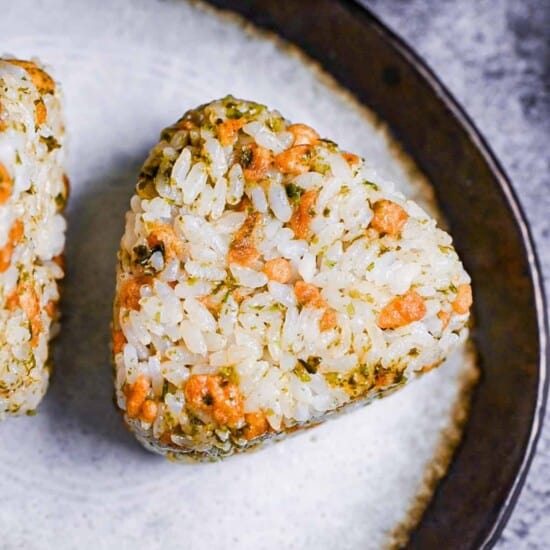




These were a hit amongst my friends. I will be making these again. (I’m actually making them right now)
Thank you for the five star review, I’m glad you could enjoy devil’s onigiri with your friends!